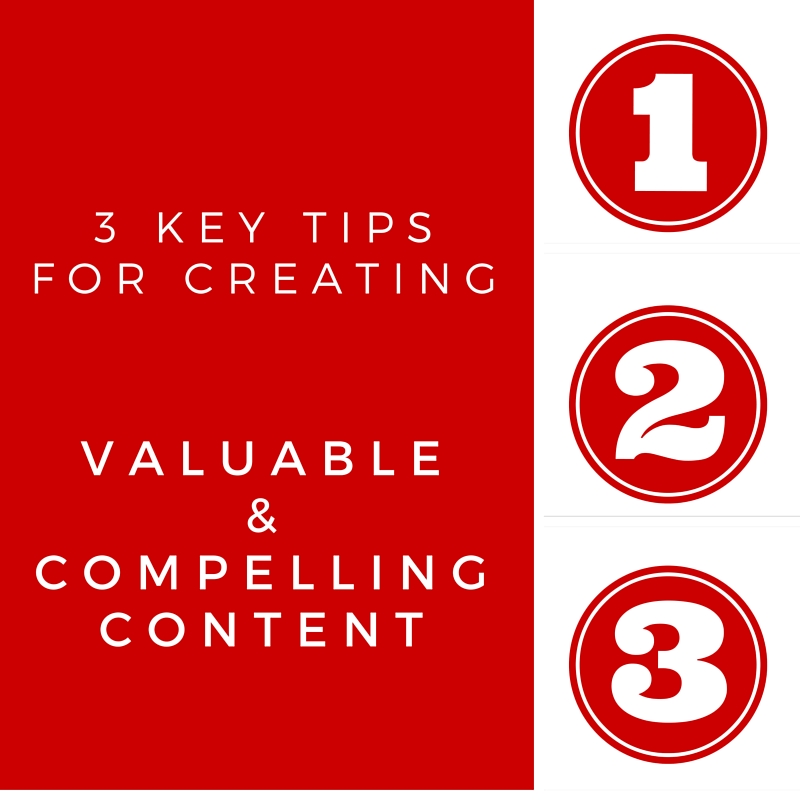
by Fronetics | Apr 7, 2016 | Blog, Leadership, Logistics, Strategy, Supply Chain
 As part of our series on trailblazing women in the supply chain industry, I interviewed Barbara Jorgensen, co-founder and managing editor, Electronics Purchasing Strategies (EPS). Jorgensen has more than 20 years’ experience as a journalist, working for leading electronics industry publications such as Electronic Business, Electronic Buyers’ News, and EDN.
As part of our series on trailblazing women in the supply chain industry, I interviewed Barbara Jorgensen, co-founder and managing editor, Electronics Purchasing Strategies (EPS). Jorgensen has more than 20 years’ experience as a journalist, working for leading electronics industry publications such as Electronic Business, Electronic Buyers’ News, and EDN.
As a freelance writer, Barb wrote and managed an award-winning custom publication for Sager Electronics; was a leading contributor to Avnet Global Perspectives magazine; was a regular columnist for the National Electronics Distributors Association monthly newsletter; and wrote for industry associations such as IPC. Barb was also a featured blogger on the B2B Website Allbusiness.com and helped launch Electronics Sourcing North America, a start-up magazine serving purchasing professionals in the Americas.
Prior to her freelance career, Jorgensen was a senior editor at Electronic Business, the pre-eminent management magazine for the electronics industry, featuring world-class manufacturing companies such as Dell, Hewlett-Packard, Cisco and Flextronics International. Before joining EB for the second time, Barb spent six years with Electronic Buyers’ News as managing editor, distribution, winning several awards for coverage of the distribution beat. A graduate of the University of Binghamton, Barb began her journalism career with the Gannett newspaper chain. She has worked for a number of local newspapers in the Greater Boston area and trade journal publishers Reed Business Information and UBM.
How long have you worked in the supply chain industry?
I’d measure my specific supply chain experience with the publication of my first feature on electronics distribution in 1989. After copy editing for a leading electronics industry magazine for a couple of years the editors suggested I use my journalism experience to do some writing. I profiled Marshall Industries, a top-tier distributor at that time, and its founder, Gordon Marshall, who passed away last year.
How did you choose (or end up) working within the industry?
In high school and college, I specialized in journalism and had been writing features and covering town government for a Boston-area daily newspaper. The schedule was grueling, so I applied for work at a trade magazine publisher. This eventually led to being assigned the electronics distribution beat. I made it my goal to understand the business inside and out, and that expertise helped establish my credentials in the industry.
Two of the leading distributors now generate revenue in excess of $20 billion per year; I was calling on them before they reached their first $1 billion.
Although I never expected to become an expert in the electronics supply chain, the growth of the industry and my expertise has enabled a solid career path.
Let’s talk about EPS. How did EPS come about?
Electronics Purchasing Strategies – soon to be called EPSNews – was driven by several external events taking place in trade publishing. A few years prior to EPS, which started publishing online in 2013, the last purchasing publication in the industry closed its doors. Trade publishers were also laying off editors as they moved more content online. My two colleagues and I – Gina Roos and Bolaji Ojo – found ourselves unemployed all at the same time.
Given the under-representation of purchasing in the trade media, we decided to come together and start an online publication. Our reputation in the electronics industry helped us secure our first advertisers. We have been fortunate enough to support the publication primarily through advertising and newsletters since.
Where is EPS today?
While we were assessing our business model after three years we discovered we weren’t keeping pace with some of the dynamics of online publishing. Although our content has always been well received we weren’t getting as much ‘bang for the buck’ as we should have vis-a-vis SEO because of the way we developed our site. Although our content won’t change—we are focused on deep analysis of the entire supply chain from design through recycling – emphasizing the news aspect of our coverage will attract a wider audience and result in better organic growth.
Revenue-wise we have grown every year since our inception; 2015 was our best year so far, growing in the mid-double-digits.
What goals do you have for the company?
We’d like to expand. Our audience has largely been based in the U.S. because that is the market we know best, but clearly electronics procurement in the Far East continues to expand. The electronics markets in Europe remains steady and, let’s face it, the supply chain is global. So EPSNews would like to devote resources toward building an audience in the EU, the Far East, and relevant geographies in between.
Have you seen a change in the number of women entering the industry and/or contributing to the industry?
Absolutely. When I began my writing career in the tech industry there were fewer women in trade publishing – most of the women I networked with then were in marketing and PR. But that changed pretty rapidly at least on the media side during the 1990s. I’d say by then there was a 50-50 split between women and men in key editorial positions. In the electronics industry, however, there were few women executives. The first woman CEO of a major distribution company was Harriet Green, named CEO of Premier Farnell in 2006. Prior to that there were a handful of women in C-level positions – I know if I mention names I will forget someone – which was extremely encouraging. These days I see more women at industry forums such as EDS and at the ECIA conference than ever before, and they are in management positions.
Have you seen a change in the positions women hold within the supply chain industry?
Again, absolutely. Women are holding higher positions in management within my ‘world’—electronics distribution – but even more so within the online/social media companies such as Yahoo that have become so important to all of us. I also recently attended a presentation by a woman who headed the high-tech entrepreneurial business within Foxconn – a Chinese EMS company – who has since moved to Flex.
Any advice for women considering entering the industry?
My advice would be the same for anyone—learn as much as you can upfront. In business journalism, I had to interview CEOs and MBAs and at the beginning that was intimidating. I finally overcame that fear by reading everything I could about the company, the industry and the executive in advance, and I also asked ‘dumb’ questions of people I trusted. I also found that admitting what I didn’t know never hurt me: even the highest executives in the industry were willing to take the time to explain many of the things that make this industry unique. I think in general people are always willing to give someone a ‘hand up.’ I also found that companies like to work with writers that took the time to learn about their business. Knowledge and professionalism are guidelines I’d recommend for anyone.
On a broader level, what trends do you see within the industry?
I think right now there is a lot of turmoil regarding the supply chain as we know it and the implications of conducting business digitally. This applies to how companies work internally and how they are going to market. The supply chain has done a pretty good job at adopting technology to improve internal operations – we haven’t had an inventory glut since 2001. Externally it’s another matter. E-commerce unintentionally set off huge problems in counterfeiting. We are still trying to figure out where social media fits: it looks like ‘free’ advertising – you can generate a lot of attention with a tweet – but you don’t always control your message. Look at the mistakes people make that go viral.
Then there is managing the supply chain online. Business practices within the electronics supply chain haven’t kept up with technology. For example, supplier franchises are still granted on a regional basis – less so than before – but online business doesn’t have any boundaries. I think we are going to see common supply chain practices change as technology accelerates. Geographic boundaries are already crumbling, and there are practices such as ship-from-stock-and-debit; inconsistent global pricing; and demand-creation compensation that are simply inefficient. There’s little room for inefficiency in the digital supply chain.
You may also be interested in:

by Fronetics | Apr 6, 2016 | Blog, Content Marketing, Marketing, Social Media, Strategy

Fronetics Strategic Advisors helps clients increase brand awareness, foster meaningful customer engagement, and grow business.
Fronetics Strategic Advisors is a management consulting firm focused on identifying and executing areas for growth and value creation for our clients. We are unique in that we use a data-driven approach to align marketing programs with business objectives and to deliver results.
“Fronetics” is derived from the ancient Greek word fronesis, meaning wisdom or intelligence, and is translated as “practical wisdom.”
Our team of strategists, marketing professionals, writers, designers, and social media experts leverages industry experience to elevate our clients’ brand position within the industry. We work with you — getting to know your business, your target customers, your industry, and your competition — to create a digital and content strategy individualized for your specific situation and needs. We put metrics on all marketing activities and monitor them regularly. And then we identify challenges, trends, and opportunities and take action so that your content marketing program constantly evolves and delivers results.
Fronetics offers comprehensive digital and content marketing services, including: content creation, content curation, content distribution, social media management, email marketing, lead nurturing strategies, and pay-per-click. Learn more about what we can do for your business below.
Content Creation
There is a lot of content out there. If you want your content to stand out and drive profitable customer action, you need quality content. At Fronetics, we create quality content that drives results. Unlike other firms, we don’t outsource content creation. By keeping all content creation in-house we are able to ensure a quality product.
Our team creates the following types of content:
- Blog posts
- Articles
- eBooks
- Case studies
- White papers
- Newsletters
- Press releases
- Infographics
- Social media
- Custom content
Social Media
Social media is an incredible tool; however, for it to be effective it must be driven by strategy, be consistent, and must have someone managing the execution.
At Fronetics, our social media strategists distribute content, curate content, engage your target audience, and monitor your social networks. We develop a social media strategy that aligns with your company’s goals.
We analyze your competition, classify your target audience and cultural attributes, identify the influencers in your industry, recommend platforms, detail best-engagement practices, create social media schedules, and identify specific tactics that deliver results.
Through the proper execution of social media, your brand is given a voice and personality, and becomes more accessible to your target audience.
Strategy Workshops
To effectively attract target customers, generate leads, and establish your company and your brand within your industry, you need a digital and content marketing strategy; a piecemeal approach does not work.
At Fronetics we offer both half-day and full-day workshops to help your business create and execute digital and content marketing strategies that drive success and elevate your brand position within your industry. Our workshops are intensive and hands-on. By the end of the workshop you will have an actionable and sustainable strategy that is aligned with your company’s business objectives.
Following the workshop you will receive a full year of support from our expert staff.
Schedule a free marketing assessment
Related posts:

by Fronetics | Mar 30, 2016 | Blog, Marketing

Use these six metrics to communicate the success of your marketing efforts to your boss.
If you are responsible for marketing for your company, you may feel that your tireless efforts are sometimes difficult to quantify to your boss. Much of what we in marketing do is behind the scenes, measured by myriad metrics that demonstrate our strategies are at work. Oftentimes, those metrics do not necessarily speak the same language as our boss.
We are motivated by website visits, conversion rates, generated leads per channel, engagement on social media platforms, blog post shares, email click-through rates, and many other methods that can illustrate the success of today’s marketing campaign. But when you are trying to present the impact of your marketing strategies to your boss, it is hard to demonstrate all of this with measurable results.
You probably sense this, too — a sort of unspoken question mark hanging in the thought bubble over your boss’ head. You share that email click-through rates went up 40%, and there is a blank expression on his or her face. You suspect your boss may not fully appreciate the importance or the overall impact of your work.
And you are probably correct. Bosses theoretically understand that a solid marketing team can directly impact your company’s bottom line, but a whopping 73% of executives don’t believe that marketers are focused enough on results to truly drive incremental customer demand.
Your boss is looking for marketing metrics that matter to him or her, ones that they clearly see a result (or a connection) in customer acquisition or increased sales. This means you must be prepared to report on data that deals with the total cost of marketing, salaries, overhead, revenue, and actual new customer acquisitions.
Six Marketing Metrics Your Boss Wants To Know
There are basically six marketing metrics that your boss is interested in. Here is a brief overview:
- Customer Acquisition Cost (CAC): This is a metric used to determine the average amount your company spends acquiring a new customer. Take what your company spends in marketing costs, divided by the number of new customers it produced. There you have the price of each new customer.
- Marketing Percentage of CAC: This is taking your marketing department costs and dividing it by the total cost of both sales and marketing to determine how much your company is spending on marketing as it relates to the what you spend to acquire new customers. A low marketing percentage of CAC shows that your marketing programs are relatively inexpensive for the results they are producing.
- Ratio of Customer Lifetime Value to CAC: This is an estimate of total value that your company derives from each customer, compared with what you spend to acquire that new customer.
- The Time to Payback CAC: This calculation demonstrates how many months it takes for your company to earn back the CAC it spent acquiring your new customers.
- Marketing-Originated Customer Percentage: This takes all of the new customers from a set time period and examines what percentage of them started with a lead generated by your marketing team.
- The Marketing-Influenced Customer Percentage: This is a metric that highlights all of the new customers that marketing interacted with while they were leads, anytime during the sales process.
When reporting to your boss about the most recent marketing results, it’s crucial to convey your performance in a way in which he or she can quantify the results in terms of impact to the company. Rather than focusing on “soft” metrics like per-post Facebook engagement, use the top six metrics that demonstrate how the marketing efforts led to new customers and what those customers are worth to the company’s growth and success.
For more tips on how to calculate and demonstrate theses metrics, download our cheat sheet on how to show your boss the measurable value of your marketing strategies.
Related posts:

by Jennifer Hart Yim | Mar 23, 2016 | Blog, Content Marketing, Marketing

Editor’s note: This is a guest post by Jennifer Cortez, Director, Marketing Communications, Transplace. Transplace is a North American non-asset-based provider offering manufacturers, retailers, chemical and consumer packaged goods companies the optimal blend of logistics technology and transportation management services.
Content has become a critical component of the modern marketing mix, but companies have to walk a fine line when it comes to the information that is being pushed out to the market. Too little and your audience will become bored and uninterested, and unfortunately, may look elsewhere for information (i.e., your competition). Too much and your audience may not know where to start (especially if it’s poorly organized). And if churning out too much content leads to a decline in quality, your audience may be left with dull, unremarkable content that, most importantly, is lacking in value to the industry.
When we’re creating content here at Transplace, (and I encourage others to keep this in mind) we ask ourselves this question: “Why should my customer care?” If you can’t answer that question, then it’s time to rethink your strategy. If you’re creating content just for the sake of it or because it’s something you know you need to do, you are most likely headed down the wrong path.
If you’re new to content marketing, first figure out what you want your content to solve before getting started. Do you want to increase brand awareness or drive more traffic to your website? Or maybe you’re focused on converting more leads into customers? Whatever it might be, each of your marketing goals will influence your content marketing strategy and therefore help you understand the audience you’re writing for, what channels you’ll share the content on, and how you’ll communicate key messages.
3 Key Content Considerations
Content is an extremely important part of our marketing and communications strategy and helps us continue to grow our brand awareness and thought leadership in the logistics and transportation industry. Our main objectives focus on three things: creating quality content that is relevant and helpful to the people in our industry, easy to understand and comes in a variety of formats. Let’s dig into these three areas a little further.
1. Producing helpful content
It’s easy to produce self-serving content such as sales pitches or a 1-pager on ‘Why you should pick our company,’ but let’s face it – tooting your own horn isn’t going to do much in terms of moving the needle closer to any of those marketing goals we mentioned previously. And most likely, these types of content pieces aren’t going to be searched for or probably even read by your target audience. One of two things occurs with standard sales slicks these days – they get deleted or physically thrown in the trash.
What is going to be helpful is producing content that becomes a useful resource for people in their day-to-day job. We want to keep them updated on trends, but it’s also important for us to keep in mind what we should be talking about that others aren’t. What are we foreseeing based on our unique position in the market that we can relay through content so our network is more prepared? If we can do a better job of talking to the buyer and figuring out what they want to hear about, then our content is only going to prove that much more valuable.
2. Content readability is key
Sometimes the topics in our industry can be complicated and it’s our job as the subject matter experts to make these complex topics understandable. It’s also important to not talk above your audience. You’ve probably heard of the Flesch readability score before, which indicates how difficult a reading passage is to understand. Content readability is powerful and your content marketing, website and SEO are dependent on it. Search engines like Bing and Google prefer readable content so when it comes to writing – keep it readable, compelling and easy to understand.
3. Content variety keeps things fresh
What I mean by this is have some fun with the types of content being created or reused for additional purposes. Did you conduct a survey and now have some great data points to share? Instead of housing this valuable information in a long article or whitepaper, you could highlight the research in an animated infographic. At Transplace, we’ve had great success at creating a variety of content pieces – from videos and podcasts to our TIP List and Q&As – we change up the types of content we’re creating to keep our audience coming back for more. You can also leverage existing content to create “new” types of thought leadership to push out. Nowadays there are several different ways people prefer to digest news and information, and we don’t have a crystal ball to show us these preferences, so you do typically need content in multiple forms in several different places whether that be print, online or social media. The permutations of content creation are endless if you tap into your creativity and keep things fresh!
Today, there is so much content out there that it’s become all too important for companies to truly create value in the information that they’re pushing out to the market. And when it comes to valuable content, keeping these three tips in mind will have you well on your way to creating content that is helpful to your audience and keeps them coming back for more!


by Fronetics | Mar 22, 2016 | Blog, Content Marketing, Leadership, Marketing
Meet five women who are changing the face of digital marketing at their big brands.
March is National Women’s History Month, and thus we’ve been talking a lot about female leadership, the gender gap, and related issues. Today I’d like to call attention to five outstanding women behind big brands who are taking the digital marketing world by storm.
Here they are, in no particular order:
 Yin Woon Rani
Yin Woon Rani
VP Integrated Marketing
The Campbell Soup Company
Camden, NJ
You may have seen the commercial where a mom, pushing two wild kids in a shopping cart, exasperatedly grabs a bottle of wine and a few cans of soup as the report of an epic, school-canceling snowstorm plays over the loudspeaker. It’s part of Campbell’s Soup’s Made for Real, Real Life campaign (#RealRealLife), the brand’s first integrated advertising campaign in more than five years. The collection of 11 ads has run across TV, digital, and social channels over the last five months. As VP of integrated marketing, Yin Woon Rani has helped drive the campaign’s success as part of her efforts to modernize the marketing program.
Rani has helped reposition several of the Campbell’s Soup Company’s brands to better resonate with a contemporary audience. Overseeing the advertising, media, design, digital, and social media disciplines, she has helped accelerate the company’s digital and content marketing program. Rani also championed an increase in digital investment — which will shift to be around 40 percent of the media buy, up from 22 percent last year.
 Pamela Vaughan
Pamela Vaughan
Principal Marketing Manager, Optimization
HubSpot
Boston, MA
As principal marketing manager for optimization at HubSpot, Pamela Vaughan helps grow traffic and conversions from the company’s various marketing assets, with a special expertise in blog optimization. She has played a leading role in optimizing the HubSpot blog, which receives 1.5 million visitors and generates 14K+ new leads each month.
Vaughan’s recent post, Why We Unsubscribed 250K People From HubSpot’s Marketing Blog & Started Sending Less Email, illustrates her marketing-savvy and commitment to user experience. She’s definitely one to watch as content marketing continues to evolve.
 Adrienne Lofton
Adrienne Lofton
SVP Global Brand Marketing
Under Armour
Baltimore, MD
Adrienne Lofton leads the team that serves as Under Armour’s brand compass and communicates the company’s “underdog” attitude to millions of athletes across the globe. A former captain of the Howard University NCAA Division I women’s volleyball team, Lofton has championed the company’s focus on the athlete, rather than the apparel outright. This ethos permeates the brand’s digital presence, and is a main part of the strategy that, no doubt, has helped Under Armour become the second largest sports apparel company in the U.S.
Pushing for confident and inspirational messaging, particularly for women and young girls, Lofton has driven several marketing campaigns that have taken the company’s digital presence to new levels. Videos from the “I Will What I Want” and #RuleYourself campaigns — created in collaboration with agency Droga5 — have reached viral status on social platforms. In particular, the #RuleYourself video featuring the USA women’s gymnastics team had nearly 10 million views on Facebook in just 3 weeks.
 Alex Hisaka
Alex Hisaka
Head of Global Content Marketing
LinkedIn
San Francisco, CA
Alex Hisaka has scaled LinkedIn’s content marketing efforts to impressive proportions. Her team plans, creates, and markets content for all stages of the buying process, producing daily blog posts and almost-weekly ebooks, which has had a massive impact on business. With a background in copywriting, design, and social marketing, Hisaka oversees much of the work herself — and her high standards are well known and much praised by her colleagues.
Hisaka adamantly believes in the social value and authenticity of content marketing and how it can bring audiences together in a mutually beneficial relationship. She has become a leading voice in content-led lead generation and strategy. We look forward to hearing more from this talented marketer.
 Alexandra Wheeler
Alexandra Wheeler
VP Global Digital Marketing
Starbucks
Seattle, WA
As vice president of global digital marketing over the last decade, Alexandra Wheeler has helped Starbucks strengthen the connection between the physical and digital worlds. This bridge is a key part of the brand experience, and one that Wheeler believes deepens the company’s relationship with its customers. Starbucks is recognized as one of, if not, the most socially engaged brands in the world, and business performance has mirrored digital growth.
Wheeler cites authenticity as central to the company’s success in the digital space. For example, when the team noticed customers posting selfies with their frappuccinos, they encouraged the #sipface campaign, which boasts over 15K posts on Instagram. Leveraging an authentic customer sentiment on the platform where they were already engaging is right up Starbucks’, and Wheeler’s, alley.
Who do you admire in the digital marketing world?
Related posts:

 As part of our series on trailblazing women in the supply chain industry, I interviewed Barbara Jorgensen, co-founder and managing editor, Electronics Purchasing Strategies (EPS). Jorgensen has more than 20 years’ experience as a journalist, working for leading electronics industry publications such as Electronic Business, Electronic Buyers’ News, and EDN.
As part of our series on trailblazing women in the supply chain industry, I interviewed Barbara Jorgensen, co-founder and managing editor, Electronics Purchasing Strategies (EPS). Jorgensen has more than 20 years’ experience as a journalist, working for leading electronics industry publications such as Electronic Business, Electronic Buyers’ News, and EDN.








 Yin Woon Rani
Yin Woon Rani Pamela Vaughan
Pamela Vaughan Adrienne Lofton
Adrienne Lofton Alex Hisaka
Alex Hisaka Alexandra Wheeler
Alexandra Wheeler